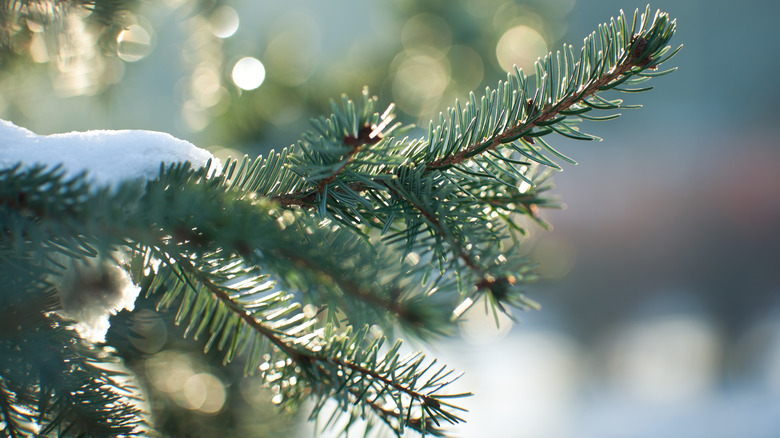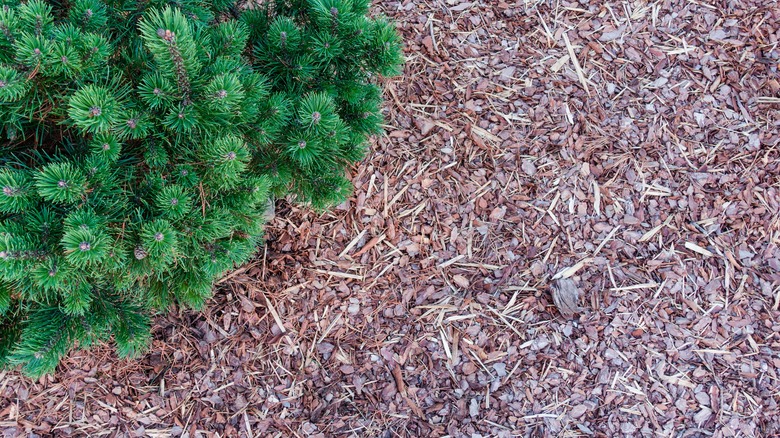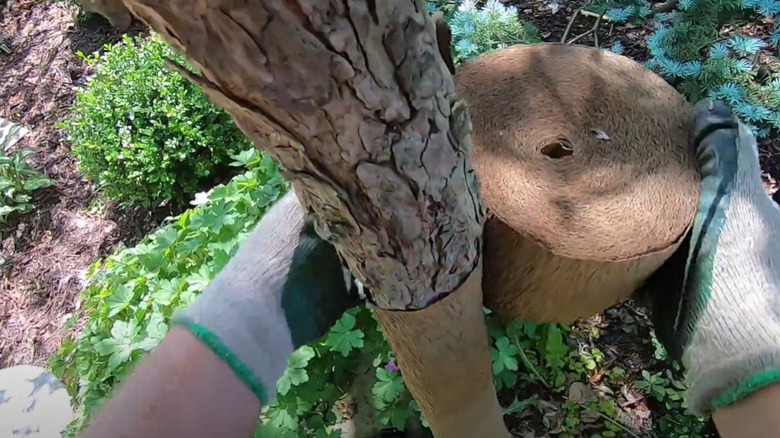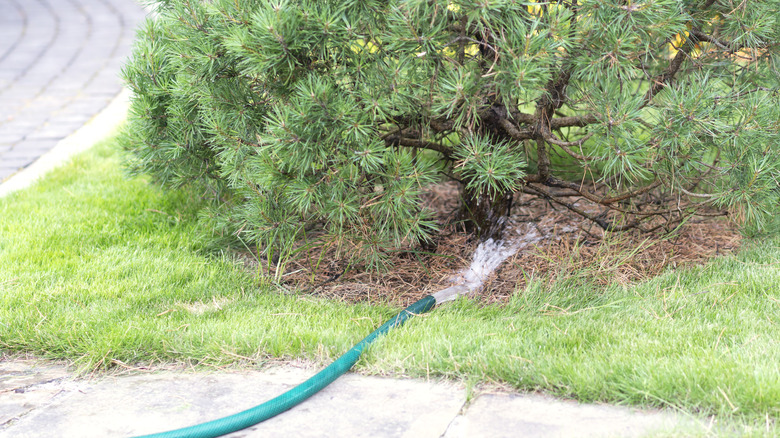Simple Tips For Caring For Pine Trees During The Winter Months
We may receive a commission on purchases made from links.
Whether tall or dwarf, many pine tree varieties lend grandeur to any landscape they grace — an inviting visual treat that owes its intoxicating fragrance to the blend of aromatic chemicals called terpenes. But the beauty of pine trees is not merely skin deep. A captivating spectacle lies in their ability to remain evergreen throughout the year. And while many plants go dormant during the cold season, pine trees, on the other hand, never stop being active, albeit at a slower pace. This singular proficiency, however, opens the conifers up to the potential perils posed by the frigid winter weather. But with a little knowledge of proper bark coverings, barriers, mulching, and watering techniques, you can ensure your pine trees have the protection they need during those chilly months.
Before we get into the specifics of winter pine tree care, let's take a moment to understand what causes the browning or bleaching of evergreen foliage during this time. This phenomenon occurs when the pine needles lose moisture faster than the roots can supply. At the center of this predicament are the winter sun, wind, and cold temperatures. If the symptoms are left unchecked, the tree may not be able to recover. Now that we've covered the basics, below are the best ways to safeguard your pine trees from winter injury.
Mulching
As temperatures drop and the ground freezes, your pine trees can be at risk, especially when the root tissues of young pines struggle to adapt. When soil temperatures dip below 15 degrees Fahrenheit, the danger of tissue damage rises, leaving your beloved trees vulnerable and in need of salvation. Enter mulch. Mulching acts as a thermal blanket, conserving the soil's warmth and limiting the freezing and thawing cycles that may cause the roots to suffer. It's like tucking the roots into a cozy, protective, earthen bed, allowing them to function peacefully despite the blizzards roaring outside.
But the benefits of mulch for pine trees during winter don't stop there. The organic material maximizes soil moisture retention, helping your pines survive when winter's dry winds and minimal precipitation seek to suck the life right out of them. A 4 to 6-inch layer of organic mulch, such as straw, shredded leaves, lawn clippings, or wood chips, is a perfect shield against the icy forces of winter. You want to lay the material in late fall, just before the chilling temperatures lay siege to your trees. Now, a word of caution: while blanketing the base of your pines, avoid getting too close and personal with the stem bark; otherwise, you may set up a recipe for rot. Your mission is to protect those green companions (not to invite trouble), after all.
Protective barriers
Picture the winter sun thawing the frozen tree trunks during the day, then the cold creeps back as day turns into night, and the same tree trunks harden in the biting frost. This cycle of freezing and thawing can harm your tree. You'll likely notice sunken, dried, cracked sections of pine tree bark, particularly on the south or southwest side of young, newly planted, and thin-barked pines. Pruning your pine trees for canopy lifting can instigate the issue. We recommend wrapping the pine tree's stem with a white anti-freeze bandage (like these LFUTARI 330Ft Tree Protector Wraps on Amazon for $18.99) or plastic tree guards in the fall. Nothing brown or black-colored, please — it might absorb heat from the sun, sparking the damage you're combating. Remove the protective cloak once the threats of the last frost are averted, ideally in spring.
If you're concerned about your young pines' ability to fend off the sun, wind, and deer, consider building a barrier around them. This is especially useful for trees on the west or south sides of your buildings. It's simple. Gather several wooden stakes, ties, chicken wire, and burlap (or a similar covering). Drive stakes into the ground to form a triangular or square enclosure around the pine. Afterward, install the chicken wire fortuitously onto the wooden posts and cap it off by attaching the burlap using zip ties. The fortress shouldn't be a suffocating prison, though. Leave the top open for light and air penetration.
Watering
Amid the flurry of snow and the chill in the air, it's easy to overlook the fact that your pine trees are battling dry conditions. A comedy of nature's mischief, winter brings with it biting winds, freezing temperatures, and a sun whose seemingly gentle demeanor masks a sinister plot. And here's how it unfolds: dry winter winds and periods of sneakily warm winter sunlight encourage your pine trees to release water into the atmosphere. But alas! While this transpiring is happening above ground, the roots are held captive in the frozen soil, unable to replace the lost water. The results are parched, browning needles and a weakened tree that lacks the hydration it desperately needs.
Watering your pine trees properly in winter can turn the tables, lending them the resilience to withstand winter's harsh conditions. However, pulling this off requires some forward thinking and preparation. When the mercury hovers above 40 degrees Fahrenheit and the ground reveals no trace of snow, it's time to saturate your trees deeply. You want to reach beyond the usual to approximately 12 inches beneath the surface for easy uptake by the eager roots. The golden opportunity usually manifests around noon, before the impending freeze locks the ground in its icy grip at nightfall. Lastly, refrain from sprinkling de-icing salt near pine trees, for it can build up to toxic amounts, ultimately draining life out of the needles.



